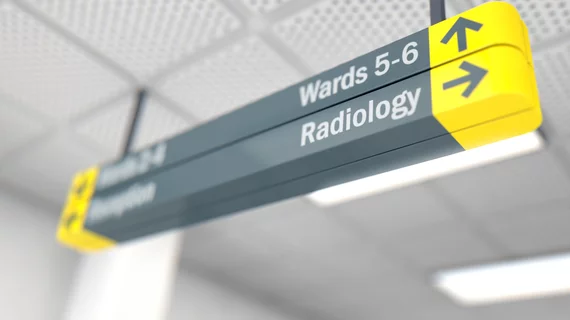Advanced AI spots urgent hip fractures, with potential for emergency radiology triage
Combining deep learning with an advanced data approach can diagnose common hip fractures and help inexperienced radiologists or trainees spot more subtle injuries.
That’s according to an artificial intelligence platform developed using more than 9,000 images showing femoral neck fractures, highlighted recently in the Journal of Digital Imaging. The network performed well at differentiating between radiographs with and without fractures, stumbling slightly on difficult-to-diagnose injuries, which was expected, the researchers noted.
With an expanded dataset and further refinement, the technique could have an outsized impact on triaging femoral fractures, which are a “major” source of morbidity and mortality in older patients, wrote Simukayi Mutasa, MD, and colleagues with Columbia University Irving Medical Center in New York.
“An automated tool which would prioritize positive femoral neck fracture cases on a radiology work list and provide a second opinion to the interpreting physician would be a valuable addition to the emergency radiology workflow,” the researchers added in the June 24 study.
For their research, a musculoskeletal radiologist labeled more than 1,000 hip radiographs as either Garden one and two fractures (127 images with subtle injury), Garden three and four (610 with clearer fracture), or normal hip scans (326). Mutasa et al. also generated thousands of images using hip CT scans to expand their dataset.
Overall, the approach performed well at spotting the difference between fracture and non-fracture cases, notching an accuracy of 92%. That dipped slightly after bringing Garden fractures into the mix, falling to 86%.
In total, the network misclassified 15 of 105 exams, with one-third claiming an injury when there was none and the remaining missing on easier-to-spot displaced fractures. The latter occurs when the bone snaps into two or more pieces.
The authors suggested a number of potential implications for their work, including triaging emergency radiology worklists for expedited treatment.
“The ability of an algorithm to iteratively learn meaningful patterns from the input data gives it the potential to recognize features of images not apparent to human visual inspection,” the group wrote. “An appropriately trained network could, therefore, augment the work of the radiologist in rendering certain diagnoses, including subtle fractures.”

